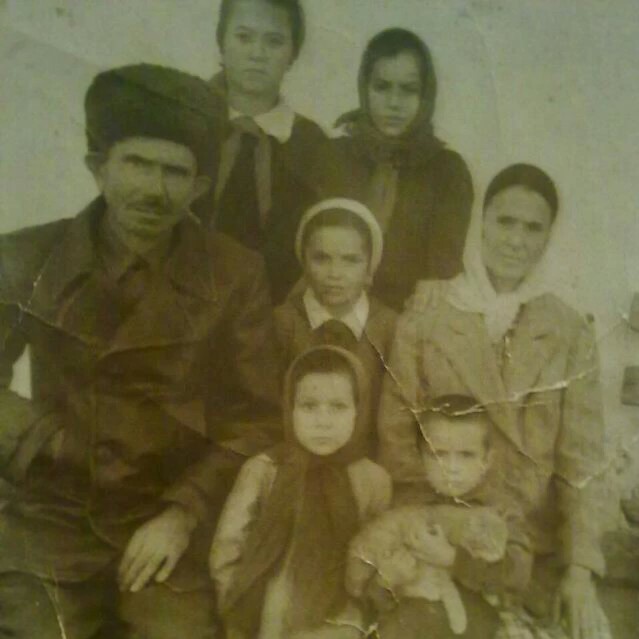Operation “Lentil” was the third of the major mass deportations of an entire ethnic group from the Caucasus in 1943-44. With at least half a million people deported, it was by far the largest of these operations. Chechens and Ingush are closely related peoples, sometimes referred to collectively as “Nakh” or “Vainakh”. As with the deportation of the Kalmyks and Karchay peoples before them, the operation to gather all ethnic Chechens and Ingush from their homes was implemented by Lavrenti Beria of the NKVD (present-day FSB). It was approved by Joseph Stalin in October 1943.
On 23 February 1944, NKVD officers began walking from house to house to round up the entire population of the Checheno-Ingush ASSR, in what many now refer to as “Aardakh” (Exodus). People were given practically no time to gather their belongings. Resistance to the NKVD was met with mass executions, as thousands were systematically brought to the lowlands and loaded onto cattle carts. The largest numbers, hundreds of thousands of individuals, were sent to present-day Kazakhstan and Kyrgyzstan, with smaller numbers to Siberia and other eastern regions.
Due to the fact that many Chechen villages are located in inaccessible, mountainous regions, several thousand people left their homes and relocated to Dagestan, Azerbaijan and Georgia. However, NKVD tracked them down and deported them to Central Asia, alongside those who at the time were fighting the Germans as soldiers in the Red Army.
Usam is a 59 year-old Chechen, currently living in Norway. Usam’s father was barely 3 years old when the NKVD came to collect him and his entire family, including his parents and three sisters. The family was deported to the steppes of Kazakhstan, where the sisters died from typhus. Usam’s father was the only survivor. To this day, the memory of his sisters who died in exile pains him greatly.
– My grandmother on my mother’s side became ill soon after the arrival to Kazakhstan. She gave birth to a boy who was taken away from her and she never saw him again. She kept looking for him, to no avail and she continued to search for him even after she returned home to Chechnya. At some point she met a lonely young boy and convinced herself that this was her lost son and adopted him. This calmed her heart and a few years later she died.
Nowadays, when he returns to Chechnya, Usam goes to show his respect to his ancestors.
-Even today, when I go to the hill where our family graves are located, I go to see my grandmother before I see my mother. It’s not difficult to find her grave, although hundreds of new graves have been added during two Russian-Chechen wars.
The Chechens and the Ingush are indigenous peoples of the North-Eastern Caucasus. Their language – Noxçiyn mot – is a linguistic group of its own. They have a long history of fierce resistance to Russian imperialism, beginning with a major war in 1785. Over one century, the numbers of Chechens and Ingush dropped dramatically as a result of war and expulsion. Resistance to Russian rule was evident also in Soviet times and resulted in two wars of independence from 1994-1996 and again from 1999 until around 2009.
Today, Chechnya is controlled by a puppet regime led by Ramzan Kadyrov. Human rights violations are rampant.
A total of 180 special trains and 5200 freight cars were used to deport the Chechens and the Ingush in the period between 23 February and 13 March, 1944. The cattle trains were not fit for human transport and many died from infections, dehydration and exhaustion.
– Stalin’s justification for the deportation of Chechens, Ingush and several other people was collaboration with the Germans. But German troops didn’t even occupy a single Chechen village. So what sort of collaboration can you even speak of? What is true, is that part of the Chechen population stood up against Soviet Russia during the Stalin era.
In Central Asia, the Chechens and Ingush were spread out over numerous special settlements. Hunger was widespread.
Soviet sources claim 496,000 Chechens and Ingush were deported, while later Chechen sources put the figure at 650,000. Estimates of deaths during transport and in settlements range from 123,000 to 200,000 and even beyond. The impact on the Chechen and Ingush peoples was immense.
After Stalin’s death on 5 March 1953, the Central Committee of the Communist Party overturned the decree stating that all deported peoples – including the Chechens and Ingush – must remain in permanent exile. Already in 1954, some tried returning to Chechnya but were sent back. Soviet authorities tried establishing Chechen “autonomies” in Uzbekistan, but they were adamant to return to their homeland. In general, Chechens began returning home even sooner than other deported peoples, once they had the opportunity.
While most returned to the North Caucasus, there are still considerable numbers of ethnic Chechens and Ingush living in Kyrgyzstan, as well as in Kazakhstan.
Upon their return, Ingush found that the so-called Prigorodny District had been transferred from the Checheno-Ingush ASSR to neighbouring North Ossetian ASSR. Houses had been taken over by Ossetians, and returning Ingush faced considerable hostility. Eventually, this led to the Prigorodny conflict of 1992, when several hundred people were killed in clashes between Ingush militas and North Ossetians security forces
– For me, the deportations are not just a question of justice and injustice. We have always been a bone in the throat of the Russian empire, and to be honest it’s part of our self-esteem. An enormous number of Chechens took part in the last two wars merely out of a wish to get back for the suffering their parents had to endure at the time of the deportations. Especially during the first war, you could hear fighters saying that they would not permit another round of violations against the Chechen people by Russians. In some ways, 1994 was a revenge for 1944.
Heritage is important to Usam but Chechen culture has frequently been under threat
-My grandfather on my father’s side had a few books that he took with him when the family was deported. One of them was a very old Koran and an interpretation in Chechen language. He brought it with him when Stalin deported the Chechens, kept it safe in Kazakhstan and returned home with it. But in 1996, during the first Chechen war, Russian forces burned down the house they had built after returning from exile. He had kept the book through all those years, but couldn’t save it from Yeltsin’s ‘democratic’ power.
In the 2021 census, ethnic Chechens made up 96,4% of the population in Chechnya. The number of ethnic Russians dropped from almost half in 1959, to 1,2% of the population in 2021. In Ingushetia, the number of ethnic Russians was even lower, 0,7% in 2021.
– Do I love Russia? No. As my forefathers did not love Russia. But like other Chechens, I’m a civilized enough person to know that my dislike for imperialistic Russia is not transferable to all ethnic Russians. There are different Russians. And events of the past 20-30 years have shown that there are different Chechens, too.

